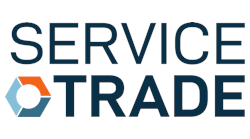Latest from Best Practices
Sponsored
Are you prepared for a visit from OSHA?
The importance of conducting proper investigations into workplace accidents has taken on added significance given the rise in industrial accidents and increasingly zealous enforcement of workplace safety laws by the Occupational Safety and Health Administration (OSHA). But the key to a proper investigation — or avoiding the accident in the first place — is having an effective safety and health program in place to protect your employees. Implementing the following best practices will help you avoid the costs of workplace injuries, including decreased productivity and lost efficiency, while putting you in the best position to defend your company’s interests against OSHA enforcement actions and citations.
Before an Accident
There are a few simple steps you can take to stay off OSHA’s radar. First and foremost, you should ensure you are accurately and regularly recording work-related injuries and illnesses on your OSHA Form 300, summarizing this information on your Form 300A on an annual basis, and posting the Form 300A. Also, confirm you have posted OSHA’s Job Safety and Health poster in a conspicuous location, which can be downloaded from OSHA’s website, www.OSHA.gov.
You should also verify that your company’s Injury and Illness Prevention Program (IIPP), which is a requirement in many states, is effective and being implemented throughout your organization. Also, check to make sure your Heat Illness Prevention Program (HIPP) includes procedures for providing sufficient drinking water and access to shade, limiting work severity and duration and allowing cool-down rest periods. Your HIPP should also set forth acclimatization methods and high-heat procedures and establish effective employee communication channels and weather monitoring systems.
Reporting an Accident
Remember that absent extenuating circumstances, every employer is required to report the fatality of an employee within eight hours and to report any in-patient hospitalization, amputation or eye loss within twenty-four hours after the employer knows, or with diligent inquiry would have known, of the severe injury. Because public safety officials and emergency response personnel from ambulance companies generally report workplace injuries to OSHA officials, odds are that the agency will know about any such injury at your workplace and will be on the lookout for your company to complete the required report.
Notably, many states have their own occupational safety and health programs and reporting requirements tend to vary by state, although all states are required to have requirements that are at least as effective as OSHA’s requirements. For instance, Cal/OSHA’s definition of a “serious injury” refers to an injury that “requires inpatient hospitalization for a period in excess of 24 hours for other than medical observation or in which an employee suffers a loss of any member of the body or any serious degree of permanent disfigurement.” Consequently, OSHA may expect you to report any incident that results in a cut or abrasion, which you may not immediately recognize as a reportable injury.
If your safety manager anticipates an upcoming onsite visit from OSHA, he or she should ensure that all worksite employees are afforded an opportunity to review their safety training records as soon as possible. Employees often understate or fail to recall the amount and specificity of their training. Be cautious if an OSHA representative asks you to comment on the status or responsibilities of any subcontractor or other party working on a construction site. Be equally cautious if the OSHA investigator asks you to comment on whether any entity is an “exposing,” “creating,” “controlling,” or “correcting” employer. Those determinations should be made only after serious deliberation and consultation with counsel.
The Onsite Inspection During the Investigation
Here are the top 10 tips to keep in mind during an onsite inspection from an OSHA representative:
1. If an OSHA investigator arrives at a time when worksite employees are engaged in strenuous activity or using potentially hazardous machinery or processes, a manager or safety official should initiate a rest period during the pendency of the visit.
2. While an OSHA investigator may ask you to allow a union representative to participate in an onsite investigation, you are not required to release a group of stewards.
3. OSHA investigators often ask employees to provide tape recorded statements. Your employees should be aware that they are not legally required to agree to be recorded. Additionally, they are entitled to receive a copy of any written statement or report they are asked to sign.
4. None of your managers or safety professionals should assist an OSHA investigator with an accident reenactment. Nor should they speculate in response to provocative or hypothetical statements or questions.
5. If you believe that too many investigators are questioning individual workers, immediately voice your concern to the lead investigator or District Manager at OSHA’s local office.
6. If you have any employees who communicate best in a language other than English, make sure any investigator who is questioning those employees is fluent in the employee’s primary language.
7. If you find that an OSHA investigator is behaving over-aggressively or exhibiting bias, ask for a pause in the investigation and contact his or her District Manager by telephone.
8. In an investigation involving a serious injury or fatality, any management-level employees should generally be accompanied in an interview by an attorney specializing in workplace safety issues.
9. Your managers should be aware that their verbal statements and any comments during walk-around sessions are “on the record” as far as the OSHA investigators are concerned.
10. OSHA investigators often focus on whether an injured employee, accident participant, or witness has supervisory responsibilities. The investigators are particularly interested in determining if a foreman or lead-person has responsibilities related to workplace safety. If OSHA determines that any person with safety responsibilities was involved in a violation of an OSHA regulation or safety order, you may forfeit the “independent employee act” defense in subsequent litigation. Therefore, it is important that you coordinate with your legal counsel ahead of time so you are prepared to accurately answer any questions and provide proper statements related to supervisory status.
Following the Initial Inspection
When asked to present an accident report or a hazard analysis soon after the event that prompted the visit, you should proceed with caution. Most investigative documents should be considered incomplete or works in progress and should not be submitted to the investigator.
If an OSHA investigator asks to return to the accident after the initial investigative visit, he should be instructed in writing to arrange follow-up visits with your legal counsel.
Similarly, if your workers’ compensation carrier wants to conduct an onsite accident investigation, make sure the insurer’s counsel initiates and directs the process. The carrier’s notes and reports should be confidential and privileged attorney-work product.
Lastly, make sure that you control access and maintain order and decorum at the accident site. Don’t rely on a receptionist or security guard to make critical decisions regarding access to an accident site.
Conclusion
The key to an effective investigation and response to a workplace incident is preparation. Anticipate that representatives from diverse agencies may ask to visit an accident site. You could get visits from OSHA enforcement officers, OSHA’s Legal Unit, the local District Attorney’s Office, police, fire, and public health agencies, the coroner, insurance investigators, plaintiffs’ attorneys and the press. All have different rights of access and different objectives; the only way to handle visits effectively from all of these individuals is to prepare ahead of time.
Collin D. Cook is a partner in the San Francisco office of Fisher Phillips. He can be reached at [email protected] or 415/490-9032.
Warren L. Nelson is a partner in the Irvine and Los Angeles offices of Fisher Phillips. He can be reached at [email protected] or 949/798-2111.


